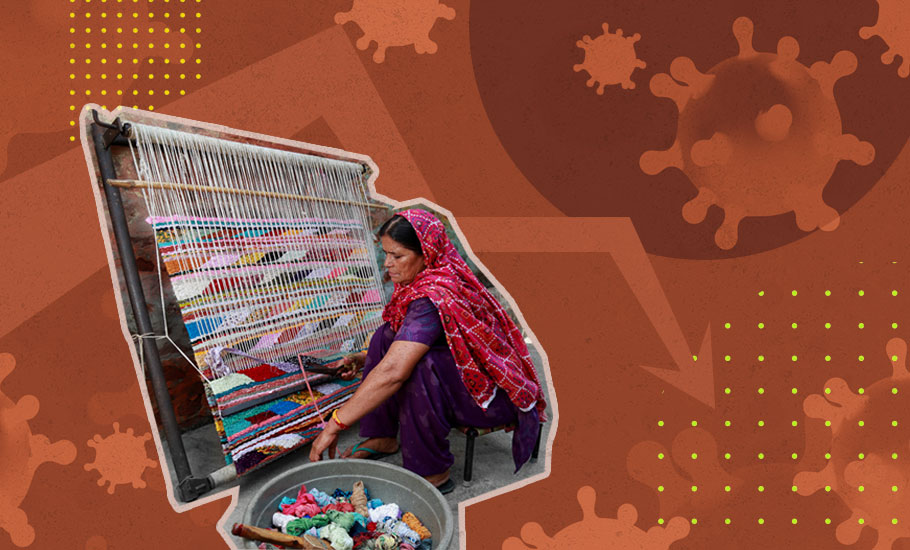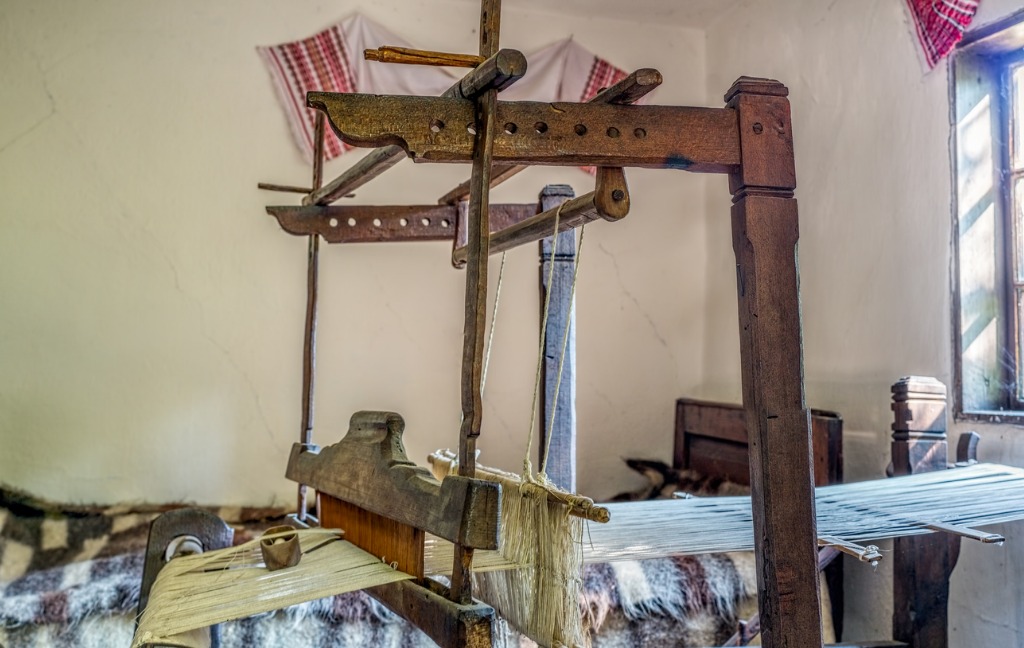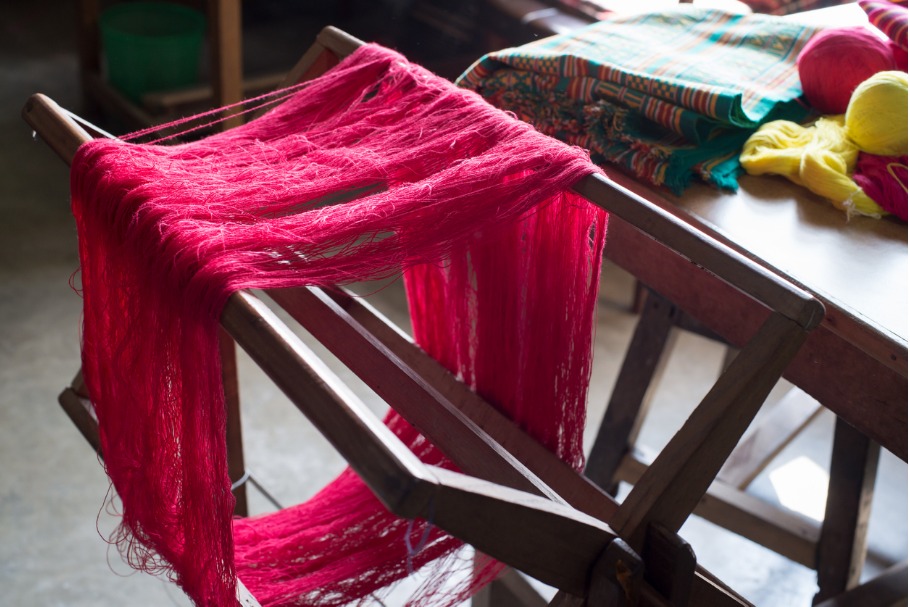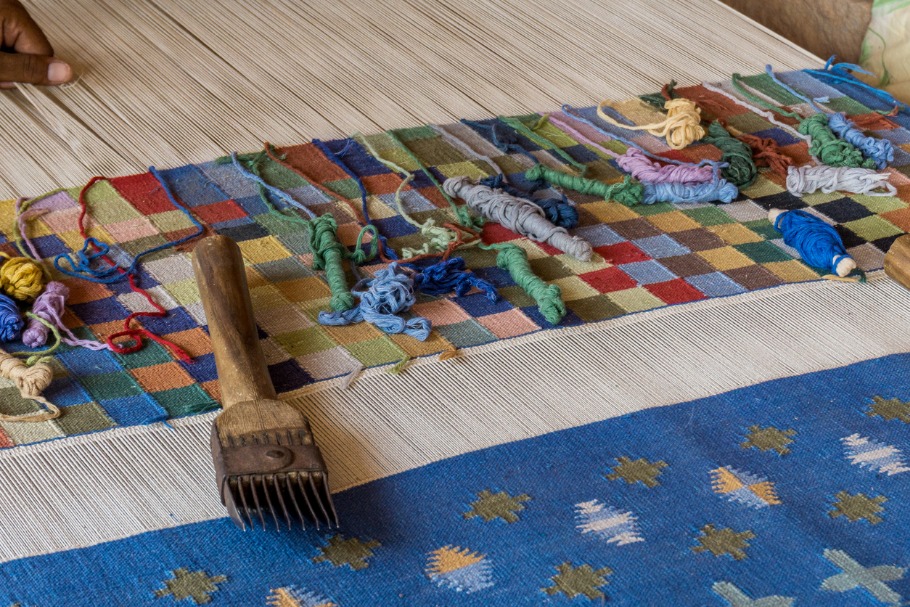
- Home
- News
- Analysis
- States
- Perspective
- Videos
- Education
- Entertainment
- Elections
- World Cup 2023
- Features
- Health
- Budget 2024-25
- Business
- Series
- NEET TANGLE
- Economy Series
- Earth Day
- Kashmir’s Frozen Turbulence
- India@75
- The legend of Ramjanmabhoomi
- Liberalisation@30
- How to tame a dragon
- Celebrating biodiversity
- Farm Matters
- 50 days of solitude
- Bringing Migrants Home
- Budget 2020
- Jharkhand Votes
- The Federal Investigates
- The Federal Impact
- Vanishing Sand
- Gandhi @ 150
- Andhra Today
- Field report
- Operation Gulmarg
- Pandemic @1 Mn in India
- The Federal Year-End
- The Zero Year
- Premium
- Science
- Brand studio
- Home
- NewsNews
- Analysis
- StatesStates
- PerspectivePerspective
- VideosVideos
- Entertainment
- ElectionsElections
- Sports
- Loading...
Sports - Features
- Budget 2024-25
- BusinessBusiness
- Premium
- Loading...
Premium

Lockdown leaves handloom weavers hanging by a thread
The art of handicrafts and handlooms has overcome all kinds of hardships over the years. Hopefully, it will continue to preserve itself.

“We did not even have the money to bring back my father’s dead body from the hospital. I had to borrow ₹4,000 for an ambulance. Now the responsibility of my three sisters and an aging mother is on me. But I have no work. I have four looms, of which three have been shut for months now due to lack of work,” says Krishna Narayan Koli, 28, a weaver from Chanderi’s Pranpur village...
“We did not even have the money to bring back my father’s dead body from the hospital. I had to borrow ₹4,000 for an ambulance. Now the responsibility of my three sisters and an aging mother is on me. But I have no work. I have four looms, of which three have been shut for months now due to lack of work,” says Krishna Narayan Koli, 28, a weaver from Chanderi’s Pranpur village in Madhya Pradesh.
On 28 May 2020, Koli’s father, Jai Narayan Koli, 59, died of a heart attack. No hospital — neither the one in Ashok Nagar, 45 km away nor the Rani Laxmi Bai Hospital which is a 100 km away in Jhansi admitted Jai Narayan Koli on the suspicion that he was COVID-19 infected. Amidst this run-around, he was declared dead.
“He never talked about it, but he was under huge financial stress caused by the lockdown,” says Koli.
Chanderi, surrounded by the Betwa River and hills, is a small qasba (town) in Ashok Nagar district of Madhya Pradesh. Due to lack of water, farming is not a viable option in the area. Almost all households here depend on weaving of the famous Chanderi sarees, which have a significant demand in big cities or related work. Before the lockdown, there were over 5,000 functioning looms employing more than 25,000 people. The lockdown that was imposed as a public health measure to curb the spread of COVID-19 also had a debilitating effect on the entire economy. In Chanderi, almost every loom was forced to shut down, leading to huge unemployment, coupled with fear of starvation. The contraction of demand that followed in the wake of a plummeting economy did not help.
No hope of getting work anytime soon
According to the Fourth All India Handloom Census 2019-20, 31 lakh people across the country work in the handloom and weaving sector, with 88% of the work being done in rural areas. Further, 66% of weavers earn less than ₹5,000 a month, which does not even meet the minimum wage stipulations mandated by the Centre.
This is compounded by the fact that 65% of weavers are not aware of social welfare schemes they are entitled to. The benefits of the health and life insurance schemes reach only 3.8% of the community. And only 23% of the weavers have a bank account. This raises key questions about the last mile delivery of COVID-19 relief packages announced by the government for vulnerable populations.
“Even when I start getting orders, I would need at least ₹3,000-4,000 per loom to restart them since looms are made up of threads and excessive moisture can corrode its components,” says Koli. “I was hoping that the government would help us financially in the times of pandemic, but there was no help except an extra 5 kg of food grains,” he adds.
“My whole family used to work on the four looms we had. My father used to do the main work and we all helped him — women play an important role in the weaving of Chanderi sarees. We managed to earn ₹4,000-5000 in a week, on which my family survived,” says Koli. “If I am not able to get the raw materials from the seth (middleman), what work will I be able to do? The sarees already made prior to the lockdown have not reached the market due to the lockdown, so there is no hope of getting new work any time soon.”

The condition of Mohammad Akhtar, who dyes these sarees, is no different. He says he survives on the meagre savings he had managed before the lockdown. “I don’t know what the future holds for us. There is a hope that the government would take care of the weavers and people like us in the times of pandemic, but so far no help has come from any government, neither state nor central.”
According to the Centre for Monitoring Indian Economy, about 120.2 million people have lost their jobs due to the lockdown in April alone. On the other hand, according to a survey by the All India Manufacturers Association, one in every three Micro, Small, and Medium Enterprises (MSME) are on the verge of closure due to the lockdown.
In the light of Finance Minister Nirmala Sitharaman’s announcement of the ₹1.7 lakh crore package and the Prime Minister Narendra Modi’s ₹20 lakh crore package under the ‘Atma Nirbhar’ (self-reliant) initiative, loss of livelihoods for people like Krishna Narayan Koli and Mohammad Akhtar raise key questions of access to social protection for distressed sectors.
However, the economic isolation of the handloom and weaving sector has preceded the pandemic. The central budget for the sector was slashed from ₹621 crores in 2014-15 to ₹456 crores in 2019-20, a cut of 32% in government support to an increasingly precarious sector.
Collapse of supply chain
Like every weaving cluster in the country, there are various working models in Chanderi too. Some weavers work through cooperative societies and some on their own with their own raw materials; the latter even sells them in the market independently. However, most of the weavers work under middlemen or small-scale businessmen. Middlemen hire weavers on the basis of demand of sarees. They provide raw materials such as cotton, silk, zari, etc., and the labour cost is determined by the amount of handiwork. On an average, a weaver is able to earn ₹1200 a week for the work in which their entire family is involved.
Mukesh Koli, 30, one such businessman, had 30 looms under him before the lockdown but all these have shut down now. “During the early days of the lockdown, we helped the weavers, I gave them some work and money too with whatever savings I was left with. But as the lockdown continued, the whole structure of the cash flow was punctured as both demand and supply collapsed completely.”
“Demand for Chanderi comes from every major city — from Hyderabad to Delhi. Due to the lockdown, (retail) shops in big cities have shut. Now, even as the lockdown is slowly lifting, there seems to be no demand. At least ₹10 lakh worth of sarees are lying in my godown. After a few months, the freshness of these sarees will start going down if they don’t sell out on time,” he says.
“Our business runs on credit,” Mukesh explains. “We borrow raw materials from the shopkeeper. After selling the finished products in the market, we pay back the shopkeeper. I have taken a loan of ₹3 lakh from the bank at 9% interest per month to pay the dues of the shopkeepers and weavers. I don’t know how long I can survive like this.”
Arpit Jain, a shopkeeper who sells raw materials in Chanderi, says if weavers don’t weave, his business will shut down too. “I cannot say the exact amount but lakhs of money are stuck in the market with the businessmen. Upon asking, they say that they don’t have the money because the sarees have piled up in their godowns. They are right too, but I also have expenses.”

The lockdown has added unnecessary financial hardships on us, he says. “Silk comes from Bangalore, cotton comes from Coimbatore, and zari comes from Surat. Due to lack of proper transportation facilities, its cost has gone up. The raw materials are delivered only up to Guna, which is 60 km away from Chanderi.”
“I do not think anything will be okay before Diwali. Till then, to keep weavers in this sector would be difficult. The government needs to step up and help the weaving community,” suggests Jain.
No different in other states
Rakesh Pal, 27, of Cuttack district in Odisha used to earn ₹900 a day in a contract job he took up in a garment pressing/ ironing department in Tiruppur district of Tamil Nadu — one of India’s largest garment manufacturing hubs — till the lockdown stopped everything.
Echoing Jain’s predictions, he says, “My father, grandfather, and many more generations used to weave sarees. Due to a lack of opportunities, I left this traditional work of weaving a few years ago.”
Rakesh paid ₹6,000 bus fare to return home. “Weaving can be done from home as long as the raw materials are supplied, so in this hope, I left Tirupur. But there is no work here either. Now, once the market resumes, I’ll head back to Tirupur again,” he says.
“My father received ₹1,000 from the Odisha government. But the government should provide more work through cooperative societies,” he says. “Prior to lockdown, my father, along with my family used to weave 12-15 sarees a month. Now, they don’t get orders of more than 5-6.”
Hundreds of kilometers away from Rakesh is Mohammad Siraj, 40, of Saysanpur village in Barabanki, Uttar Pradesh, who is also facing a similar hardship. “I have not even received the aid of ₹1,000 promised by the state government. Lockdown has crushed the backbone of Barabanki, unemployment has increased exponentially in the district.”
“I have not earned a single rupee since the second lockdown was announced. Materials are not coming to Barabanki, and the old finished products are not reaching the market. How will I get any work?” he asks. “If it continues this way, I’ll be forced to migrate to the cities, possibly to Mumbai, where I have some relatives who work in the construction sector. I have borrowed ₹6,000 to feed my family.”
In Barabanki, there are 20,000 looms and 50,000 weavers. “In my village alone, there are hundreds of looms, but now only 30% of them would be working due to lack of work,” Siraj adds.

Need state intervention
Associate professor of economics at Ramakrishna Mission Vivekananda Educational and Research Institute, Manas Ranjan Bhowmik says the handloom sector functions in a very decentralised manner, so there cannot be a single solution for the crisis.
“The handloom sector was already facing severe shock due to demonetisation and flawed implementation of Goods and Services Tax (GST) regime. Since most of the weavers and small traders have limited formal education, filing GST is a tedious task for them. COVID-19 and subsequent lockdowns have only worsened the situation. Currently, it is difficult to say whether the handloom sector can recover from this shock or not,” says Bhowmik.
“The reason behind weavers’ vulnerability is an institutional failure and political apathy. Institutional failure results in the non-accessibility of social security schemes to weavers. Those schemes remain visible only on papers. The major constraints are lack of awareness and limited among the weavers. However, I found in my study in Nadia and Murshidabad district, which is among the largest weaving clusters in West Bengal, that wherever the NGOs and co-operatives are working honestly, the weaver gets the benefit of some schemes, but the numbers are very small,” he explains.
He suggests that the government should buy the finished product from cooperatives as well as these small traders for a few months at least. “The government has an apex market to sell these goods in every state. A tax rebate should be given, along with a dedicated relief package for the handloom sector. Like MGNREGA, an employment guarantee could help the sector to recover.”
He concludes by saying, “The art of handicrafts and handlooms has overcome all kinds of hardships over the years. Hopefully, it will continue to preserve itself. But the government needs to support for at least a year.”
(The author is a research assistant with Digital Empowerment Foundation)

